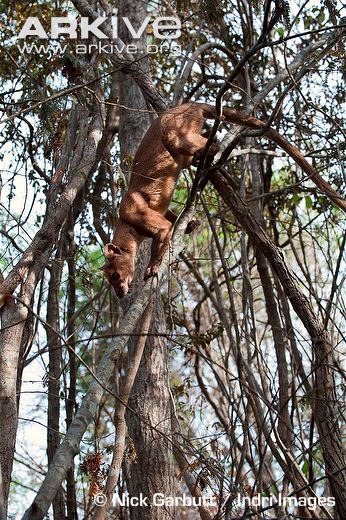
Form and Function
Cryptoprocta ferox ranges from 7 to 12 kg (15.5 to
26.5 lbs) and 610 to 800 mm (2 to 2.6 feet) (Animal Diversity
Web, 2013). It has a similar structure to species in Felidae,
but appears to share traits similar to many organisms. It has
been so cleverly described as having features similar to a dog’s
nose, otter’s whiskers and a leopard’s teeth (Sunquist, 2000).
It has a long, slender body and short legs, which help them to
maneuver through trees as quickly as they do.
A couple other aspects of C. ferox are that they
have teeth similar to felines and retractable claws, as well.
These are useful in capturing and holding prey, such as lemurs.
Also, the claws are essential for climbing up and running
through the trees (Garbutt, 2003), which they are capable of
doing with grace and ease.
Here is a video showing how the fossa moves flawlessly
through the trees of Madagascar. Another feature of the fossa
that helps with running through trees is their tail, which is
nearly as long as their body (Kohncke & Leonhardt, 1986). The
tail actually plays an important role for the fossa when it is
moving through the trees. It helps to provide balance for the
animal, similar to the pole of a tightrope walker (National
Geographic, 2013).
Image credit: Nick Garbutt at Arkive.org